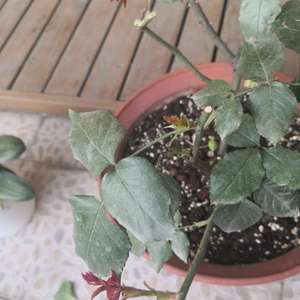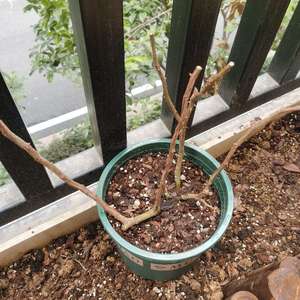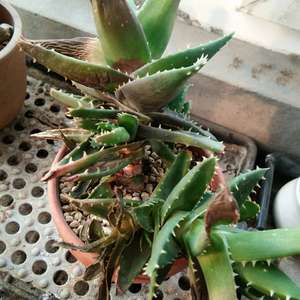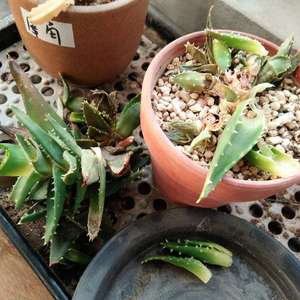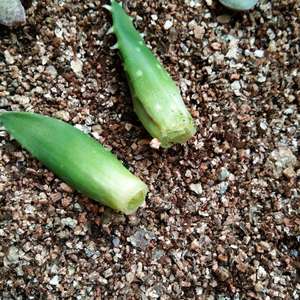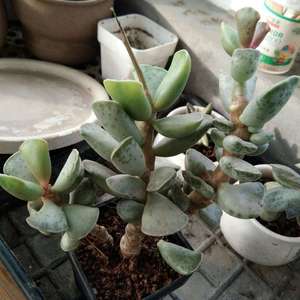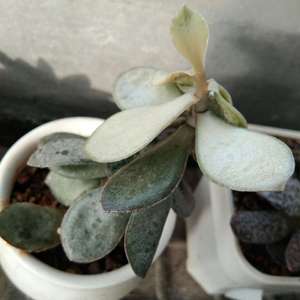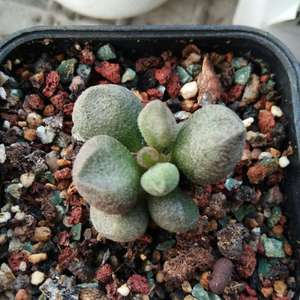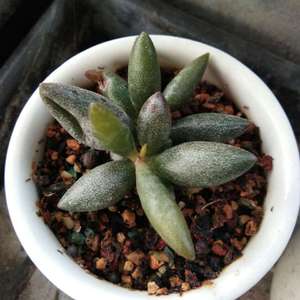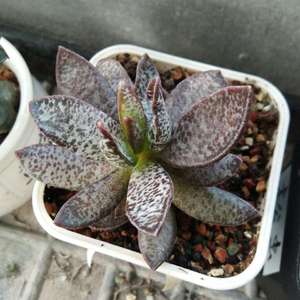成长记
欣琳
2023年06月11日

薄雾蓝莓的新芽长得很快
就是卖家让我有点不和平
说是之前发错货了
我问一下给他补了差价6元
我后来又去看了一下买家秀
发现别人的两年苗也和我差不多
难道这么多发错了的
算了
我不太想纠结这件事了
原来蓝莓苗是按照能不能结果分年份的
他发我的两年苗看起来比三年苗还粗
就是叶子太少了
还说不包成活
搞得我心情不美好了
所以说虽然我被种草了蓝莓
可是这几次蓝莓的购买和体验都让我不和平
以后我可能不会再买了
或者会去淘宝或者其他店里买
不再去那家店了
发错货是店家的问题 我补了三年苗的价格 但是卖家秀里很多三年苗就带了十几个果 我的只带了两个果子
感觉自己亏了
虽然我信任他
可这件事让我感觉不好
也许我并不知道这件事的真正意义
我不纠结了
以后有机会再看吧
蓝莓购买给我的体验不好
希望到时候苗苗能活下来
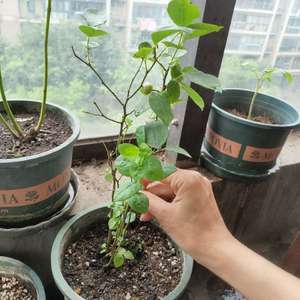
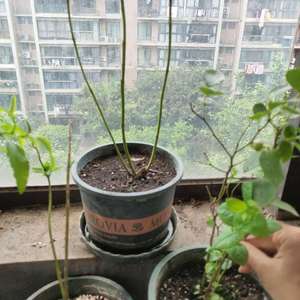
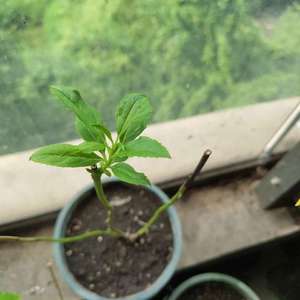
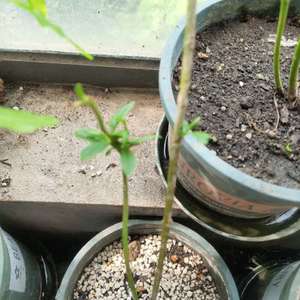
就是卖家让我有点不和平
说是之前发错货了
我问一下给他补了差价6元
我后来又去看了一下买家秀
发现别人的两年苗也和我差不多
难道这么多发错了的
算了
我不太想纠结这件事了
原来蓝莓苗是按照能不能结果分年份的
他发我的两年苗看起来比三年苗还粗
就是叶子太少了
还说不包成活
搞得我心情不美好了
所以说虽然我被种草了蓝莓
可是这几次蓝莓的购买和体验都让我不和平
以后我可能不会再买了
或者会去淘宝或者其他店里买
不再去那家店了
发错货是店家的问题 我补了三年苗的价格 但是卖家秀里很多三年苗就带了十几个果 我的只带了两个果子
感觉自己亏了
虽然我信任他
可这件事让我感觉不好
也许我并不知道这件事的真正意义
我不纠结了
以后有机会再看吧
蓝莓购买给我的体验不好
希望到时候苗苗能活下来




0
0
成长记
嘉多宝
2022年09月21日

突然发现两年多没更新这货的情况了
一直属于不怎么管式放养,结果还分外争气,数了数,光是从土里钻出来的侧枝就有6个,现在都已经很粗很硬了,主干高处也有3个分枝,真的不要太给力!
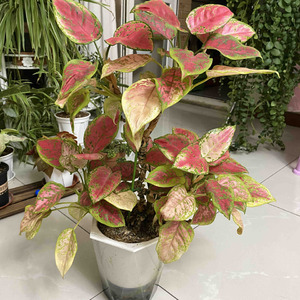
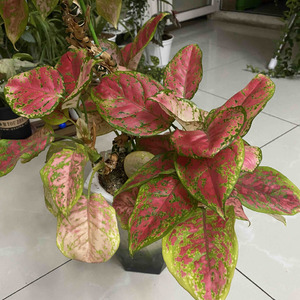
一直属于不怎么管式放养,结果还分外争气,数了数,光是从土里钻出来的侧枝就有6个,现在都已经很粗很硬了,主干高处也有3个分枝,真的不要太给力!


0
0
文章
Miss Chen
2022年06月13日

Cotton rose (Hibiscus mutabilis) is a large flowering shrub with bright green, lobed, hairy leaves that stretch roughly 3 to 6 inches long and wide. The stems can grow tall and wide enough to become tree-like. But the plant's flowers are its real show-stopping feature.
They begin blooming in the summertime, starting off as a white or light pink color. Typically within one to three days, the color changes to a magenta pink and then a dark pink to red. The blooms then last for several more days. The shrub usually will have flowers at various stages of the color-change process on it all at once, providing exceptional visual interest. Fuzzy seed pods, whose cotton-like appearance gives the plant its common name, follow the flowers.
Cotton rose shrubs have a fast growth rate and should be planted in the spring.
Common Name Cotton rose
Botanical Name Hibiscus mutabilis
Family Malvaceae
Plant Type Shrub
Mature Size 6–15 ft. tall, 6–10 ft. wide
Sun Exposure Full, partial
Soil Type Loamy, well-drained
Soil pH Neutral, alkaline
Bloom Time Summer, fall
Flower Color White, pink, red
Hardiness Zones 7–11 (USDA)
Native Area Asia
Cotton Rose Care
Cotton rose can provide lots of drama in the landscape, yet it requires minimal maintenance. It’s not overly picky about its soil as long as there’s good drainage, and it can tolerate some drought. It’s even known to be deer-resistant.
You’ll typically have to prune annually, though the shrub usually doesn’t need extensive pruning. And plan to water and fertilize during the growing season.
Light
For best growth, plant your cotton rose in a spot that gets full sun, meaning at least six hours of direct sunlight on most days. The shrub also can tolerate partial shade, though it might not flower as profusely.
Soil
This shrub can grow in most soils with good drainage. But it does best in a loamy soil that’s rich in organic matter. A neutral to slightly alkaline soil pH is ideal.
Water
While cotton rose can tolerate some drought, it’s best to maintain a moderate amount of moisture during the growing season. A good rule of thumb is to water when the top 2 inches of soil dry out. Water minimally during the winter—just enough to prevent the soil from fully drying out. Try to avoid getting the foliage wet when watering, as this can promote fungal growth.
Temperature and Humidity
This is not a cold-hardy shrub. Frost will cause it to drop its leaves in the fall and enter dormancy. Then, it can tolerate temperatures slightly below freezing over the winter, but anything colder might damage or kill the shrub. Humidity typically isn’t a factor as long as adequate soil moisture and good air circulation around the shrub are maintained.
Fertilizer
Fertilizer isn't essential unless you have poor soil, but it can help to speed growth. Use a balanced fertilizer during the growing season, following label instructions.
Types of Cotton Rose
There are several types of cotton rose, including:
'Cotton Rose Nagoya': This cultivar features white flowers.
'Plenus': This cultivar is known for its double blooms.
'Rubra': Red flowers are the trademark of this cultivar.
Pruning
Prune your cotton rose in the late winter or early spring. Remove any damaged or diseased stems as they arise. Usually only a light pruning is necessary to shape growth. But if your shrub has become leggy and unsightly, you can cut it back almost to the ground. New shoots will quickly grow to fill in the space.
Propagating Cotton Rose
Cotton rose can be propagated by stem cuttings. Not only is this a cheap and easy way to get new plants, but it also allows you to put any stems that you pruned off to good use. The best time to take cuttings is in the late winter to early spring. Here’s how:
Trim off a piece of healthy stem that’s around 1 to 1.5 feet long. Cut just below a leaf node, and make your cut at a 45-degree angle.
Dip the cut end in rooting hormone.
Plant the cutting in a moist soilless potting mix. Use a 1-gallon container with drainage holes.
Place the container in a bright, south-facing window or in a sheltered area that gets partial sun outside if you live in a warmer climate.
Keep the soil lightly moist but never waterlogged, and roots should form in roughly four to six weeks.
How to Grow Cotton Rose From Seed
Direct sow cotton rose seeds in the spring; they germinate best when the temperatures are between roughly 55 and 65 degrees Fahrenheit. Plant them about 1/4 inch deep, and keep the soil moist but not waterlogged. You should see germination within a week or two, and plants can even flower in their first year if they're started early enough.
Potting and Repotting Cotton Rose
It’s possible to grow cotton rose in a pot, but this likely will stunt the shrub’s growth and diminish its blooms. Also, note that container plants generally need more frequent watering than those grown in the ground.
Use a quality all-purpose potting mix with good drainage. And select a container that allows for at least a few inches of extra space on all sides of the plant’s root ball. The container also should have drainage holes. Unglazed clay is a good material to allow excess soil moisture to evaporate through its walls. But you might want to consider using a grow bag because it will be lighter to move.
When you see roots coming out of the drainage holes and popping up from the soil line, it’s time to repot. It’s best to do this in the spring. Choose a container size up, and add fresh soil around the root ball.
Overwintering
In the colder parts of cotton rose's growing zones, the stems often naturally die back over the winter. But the shrub still should produce fresh growth in the spring. Plan to prune off the stems that have died back in the late winter to early spring. If you do it earlier as part of your garden's overwintering maintenance, this can damage the shrub.
If you’re growing your cotton rose in a container and live in the cooler parts of its growing zones, bring it into an unheated garage or shed over the winter. This will help to prevent the container soil from getting too cold and damaging the plant's roots.
Common Pests & Plant Diseases
Cotton rose is susceptible to some common garden pests, including aphids, mealybugs, whiteflies, spider mites, and scale. Infestations often can be treated with insecticidal soaps or even a strong spray of water.
Common diseases include leaf spot, southern stem blight, and powdery mildew. Remove any stems with signs of fungal growth. Also, aim to prevent fungal diseases by watering only at the base of the plant and maintaining good air flow around it.
How to Get Cotton Rose to Bloom
Cotton rose flowers are a saucer shape with four to five petals each. They stretch around 3 to 6 inches across. Blooming typically begins in the late summer and stretches into fall. The flowers won't provide fragrance for your garden, but they will attract many beneficial pollinators.
It's not essential to deadhead, or remove the spent blooms, but it can help to promote further blooming. However, this plant will typically bloom profusely on its own as well. Just make sure it has sufficient sunlight, moisture, and organic matter in the soil to support flowering.
Common Problems With Cotton Rose
When grown in the conditions it likes, cotton rose isn’t prone to serious problems. However, an inadequate environment can lead to some common issues.
Leaves Turning Yellow
Yellowing leaves can often be a sign of overwatering or underwatering. Make sure the soil is never waterlogged. But on the flip side, plan to water a little extra in hot weather.
Plant Leaves Falling Off
In the warmest parts of its growing zones, this shrub often holds onto its leaves year-round. But during the winter months in its cooler zones, it will naturally drop some or all of its leaves. This isn’t cause for concern, as it will regrow come spring. However, leaf drop during the growing season can be a sign of inadequate watering or disease.
FAQ
What's the difference between cotton roses and roses?
While they share a common name, cotton roses are actually members of the Hibiscus genus while roses are of the Rosa genus. However, both plants’ showy blooms do somewhat resemble each other.
Where should I place cotton rose outside my house?
The cotton rose can make for a dramatic specimen planting, providing a showy floral display toward the end of the growing season when many other plants have already wrapped up their blooming period. It also can be grown as a shrub border.
Can cotton rose be grown indoors?
It is not ideal to try to grow cotton rose shrubs indoors. They require direct sunlight to grow and bloom at their best. And they generally become too large to be a houseplant.
They begin blooming in the summertime, starting off as a white or light pink color. Typically within one to three days, the color changes to a magenta pink and then a dark pink to red. The blooms then last for several more days. The shrub usually will have flowers at various stages of the color-change process on it all at once, providing exceptional visual interest. Fuzzy seed pods, whose cotton-like appearance gives the plant its common name, follow the flowers.
Cotton rose shrubs have a fast growth rate and should be planted in the spring.
Common Name Cotton rose
Botanical Name Hibiscus mutabilis
Family Malvaceae
Plant Type Shrub
Mature Size 6–15 ft. tall, 6–10 ft. wide
Sun Exposure Full, partial
Soil Type Loamy, well-drained
Soil pH Neutral, alkaline
Bloom Time Summer, fall
Flower Color White, pink, red
Hardiness Zones 7–11 (USDA)
Native Area Asia
Cotton Rose Care
Cotton rose can provide lots of drama in the landscape, yet it requires minimal maintenance. It’s not overly picky about its soil as long as there’s good drainage, and it can tolerate some drought. It’s even known to be deer-resistant.
You’ll typically have to prune annually, though the shrub usually doesn’t need extensive pruning. And plan to water and fertilize during the growing season.
Light
For best growth, plant your cotton rose in a spot that gets full sun, meaning at least six hours of direct sunlight on most days. The shrub also can tolerate partial shade, though it might not flower as profusely.
Soil
This shrub can grow in most soils with good drainage. But it does best in a loamy soil that’s rich in organic matter. A neutral to slightly alkaline soil pH is ideal.
Water
While cotton rose can tolerate some drought, it’s best to maintain a moderate amount of moisture during the growing season. A good rule of thumb is to water when the top 2 inches of soil dry out. Water minimally during the winter—just enough to prevent the soil from fully drying out. Try to avoid getting the foliage wet when watering, as this can promote fungal growth.
Temperature and Humidity
This is not a cold-hardy shrub. Frost will cause it to drop its leaves in the fall and enter dormancy. Then, it can tolerate temperatures slightly below freezing over the winter, but anything colder might damage or kill the shrub. Humidity typically isn’t a factor as long as adequate soil moisture and good air circulation around the shrub are maintained.
Fertilizer
Fertilizer isn't essential unless you have poor soil, but it can help to speed growth. Use a balanced fertilizer during the growing season, following label instructions.
Types of Cotton Rose
There are several types of cotton rose, including:
'Cotton Rose Nagoya': This cultivar features white flowers.
'Plenus': This cultivar is known for its double blooms.
'Rubra': Red flowers are the trademark of this cultivar.
Pruning
Prune your cotton rose in the late winter or early spring. Remove any damaged or diseased stems as they arise. Usually only a light pruning is necessary to shape growth. But if your shrub has become leggy and unsightly, you can cut it back almost to the ground. New shoots will quickly grow to fill in the space.
Propagating Cotton Rose
Cotton rose can be propagated by stem cuttings. Not only is this a cheap and easy way to get new plants, but it also allows you to put any stems that you pruned off to good use. The best time to take cuttings is in the late winter to early spring. Here’s how:
Trim off a piece of healthy stem that’s around 1 to 1.5 feet long. Cut just below a leaf node, and make your cut at a 45-degree angle.
Dip the cut end in rooting hormone.
Plant the cutting in a moist soilless potting mix. Use a 1-gallon container with drainage holes.
Place the container in a bright, south-facing window or in a sheltered area that gets partial sun outside if you live in a warmer climate.
Keep the soil lightly moist but never waterlogged, and roots should form in roughly four to six weeks.
How to Grow Cotton Rose From Seed
Direct sow cotton rose seeds in the spring; they germinate best when the temperatures are between roughly 55 and 65 degrees Fahrenheit. Plant them about 1/4 inch deep, and keep the soil moist but not waterlogged. You should see germination within a week or two, and plants can even flower in their first year if they're started early enough.
Potting and Repotting Cotton Rose
It’s possible to grow cotton rose in a pot, but this likely will stunt the shrub’s growth and diminish its blooms. Also, note that container plants generally need more frequent watering than those grown in the ground.
Use a quality all-purpose potting mix with good drainage. And select a container that allows for at least a few inches of extra space on all sides of the plant’s root ball. The container also should have drainage holes. Unglazed clay is a good material to allow excess soil moisture to evaporate through its walls. But you might want to consider using a grow bag because it will be lighter to move.
When you see roots coming out of the drainage holes and popping up from the soil line, it’s time to repot. It’s best to do this in the spring. Choose a container size up, and add fresh soil around the root ball.
Overwintering
In the colder parts of cotton rose's growing zones, the stems often naturally die back over the winter. But the shrub still should produce fresh growth in the spring. Plan to prune off the stems that have died back in the late winter to early spring. If you do it earlier as part of your garden's overwintering maintenance, this can damage the shrub.
If you’re growing your cotton rose in a container and live in the cooler parts of its growing zones, bring it into an unheated garage or shed over the winter. This will help to prevent the container soil from getting too cold and damaging the plant's roots.
Common Pests & Plant Diseases
Cotton rose is susceptible to some common garden pests, including aphids, mealybugs, whiteflies, spider mites, and scale. Infestations often can be treated with insecticidal soaps or even a strong spray of water.
Common diseases include leaf spot, southern stem blight, and powdery mildew. Remove any stems with signs of fungal growth. Also, aim to prevent fungal diseases by watering only at the base of the plant and maintaining good air flow around it.
How to Get Cotton Rose to Bloom
Cotton rose flowers are a saucer shape with four to five petals each. They stretch around 3 to 6 inches across. Blooming typically begins in the late summer and stretches into fall. The flowers won't provide fragrance for your garden, but they will attract many beneficial pollinators.
It's not essential to deadhead, or remove the spent blooms, but it can help to promote further blooming. However, this plant will typically bloom profusely on its own as well. Just make sure it has sufficient sunlight, moisture, and organic matter in the soil to support flowering.
Common Problems With Cotton Rose
When grown in the conditions it likes, cotton rose isn’t prone to serious problems. However, an inadequate environment can lead to some common issues.
Leaves Turning Yellow
Yellowing leaves can often be a sign of overwatering or underwatering. Make sure the soil is never waterlogged. But on the flip side, plan to water a little extra in hot weather.
Plant Leaves Falling Off
In the warmest parts of its growing zones, this shrub often holds onto its leaves year-round. But during the winter months in its cooler zones, it will naturally drop some or all of its leaves. This isn’t cause for concern, as it will regrow come spring. However, leaf drop during the growing season can be a sign of inadequate watering or disease.
FAQ
What's the difference between cotton roses and roses?
While they share a common name, cotton roses are actually members of the Hibiscus genus while roses are of the Rosa genus. However, both plants’ showy blooms do somewhat resemble each other.
Where should I place cotton rose outside my house?
The cotton rose can make for a dramatic specimen planting, providing a showy floral display toward the end of the growing season when many other plants have already wrapped up their blooming period. It also can be grown as a shrub border.
Can cotton rose be grown indoors?
It is not ideal to try to grow cotton rose shrubs indoors. They require direct sunlight to grow and bloom at their best. And they generally become too large to be a houseplant.
0
0






